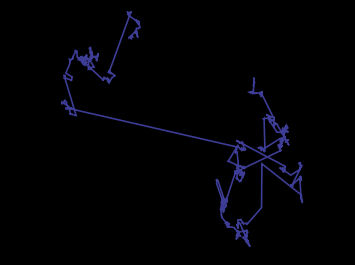
Working with the Hadza tribe in Africa, researchers have found that human hunter-gatherers follow the same mathematical pattern in their movements as sharks, honeybees, and many other animals. Published in the Proceedings of the National Academy of Sciences, the study used GPS trackers to show that human hunters follow the classic exploration pattern defined by the French mathematician Paul Lévy.
The Lévy walk, which involves a series of short movements in one area and then a longer trek to another area, has been observed previously in a study of human movements around an amusement park. The Lévy walk pattern appears to be ubiquitous in animals, but the new study represents the first time the behavior has been documented in human hunter-gatherers.
University of Arizona anthropologist David Raichlen, who led the study, said the Hadza are one of the last big-game hunters in Africa, and one of the last groups on Earth to still forage on foot using traditional methods. “If you want to understand human hunter-gatherer movement, you have to work with a group like the Hadza,” he said.
Members of the tribe wore wristwatches with GPS units that tracked their movement while on hunting or foraging bouts. The GPS data showed that the dominant theme of their foraging movements was a Lévy walk – the same pattern used by many other animals when hunting or foraging.

The researchers think that because the Lévy pattern seems to occur across species and across environments, it is likely a fundamental pattern grounded in evolutionary history.

Related:
Discuss this article in our forum
ADHD A Benefit In The Wild?
UK scientists aim to create artificial bee brain
Bee thrill-seekers reveal evolutionary importance of novelty
Algorithm For “Nature” Described

















Comments are closed.